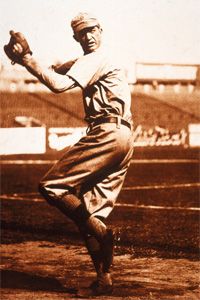Pitching: It Starts With the Legs
When people talk about pitching, they often discuss how fast the ball travels to the plate. But where does a high-powered fastball get its energy? As Hall of Fame right-hander Early Wynn once said, "A pitcher is only as good as his legs." That's because a 94-mph (151-kph) fastball begins its life below the pitcher's belt, gathering energy from the legs and unleashing it through the trunk of the body and then to the arm.
To generate all of that energy, a pitcher must be able to throw an energetic ball consistently and accurately without unnecessarily straining the body. Although form and technique can vary wildly, most successful pitchers incorporate seven basic components into their pitch delivery. Let's walk through them, assuming a right-handed pitcher throwing with no runners on base:
Advertisement
- Starting position -- The pitcher stands tall, with his body facing the plate and his glove, concealing the ball and throwing hand, tucked just below the chin. Both feet rest on the rubber, about shoulder width apart.
- The rocker -- Now the pitcher takes a small step back with his left foot. This rocks the body slightly back, although the pitcher's chin and glove remain centered over his right leg. This slight rocking motion unlocks a flow of momentum and energy that cascades through the pitch.
- The pivot and balance -- The pitcher transfers weight again by making a small turn with his right foot to place it parallel with the rubber. This is the pivot, which turns the body so only the left hip and shoulder face the plate. Next, the pitcher moves into the balance position by lifting his left knee smoothly until it's level with his waist. Both hands should still be together and located close to the body, under the chin.
- Hand separation -- The balance position stores the pitcher's energy, much like a coiled spring. To unleash that energy, the pitcher drives forward with his right leg and hip. At the same time, the hands first separate, then move down, back and up like a pendulum. The left foot, still off the ground, leads the body forward.
- Power slot position -- The pitcher plants his left foot in front of his body while the right foot remains situated against the rubber. His throwing hand now sits level with his hat, fingers on top of the ball. His left arm is bent at the elbow, with the gloved thumb pointing to the ground.
- The square position -- With his left foot firmly planted, the pitcher rotates his hip and trunk by turning on the ball of his right foot. This squares the pitcher's chest, shoulders and hips with the plate and starts to bring his throwing hand forward.
- The delivery -- Finally, the pitcher drives his right leg forward, which rotates his hip around his front leg. This in turn rotates the torso and brings the arm forward. He makes the throw by whipping his right arm from 11 o'clock to 5 o'clock and then following through so that his right foot touches down with his body square to the plate, ready to field a ball batted directly back.
The ball now carries the energy generated in the pitcher's windup and delivery. How much? Physicists would use the following formula:
K = 0.5mv2
where K is kinetic energy, m is the mass of the baseball and v is its velocity. If the ball reaches a speed of 94 mph (42 meters per second), the kinetic energy would be (0.5)(0.149 kilograms)(42 meters per second)(42 meters per second), or 131 joules. A speeding bullet carries about 4,000 joules of energy, so a "rifle arm" is an overexaggeration, but it's still a lot of energy in the sports world (a well-hit serve in professional men's tennis would give a tennis ball about 128 joules of kinetic energy) [source: Impey].
